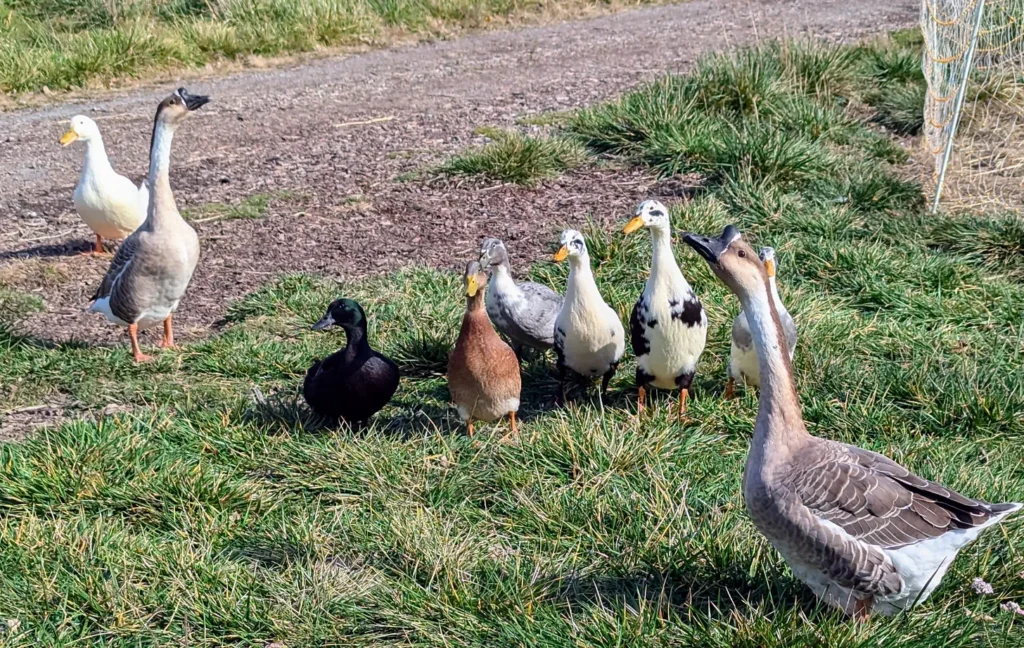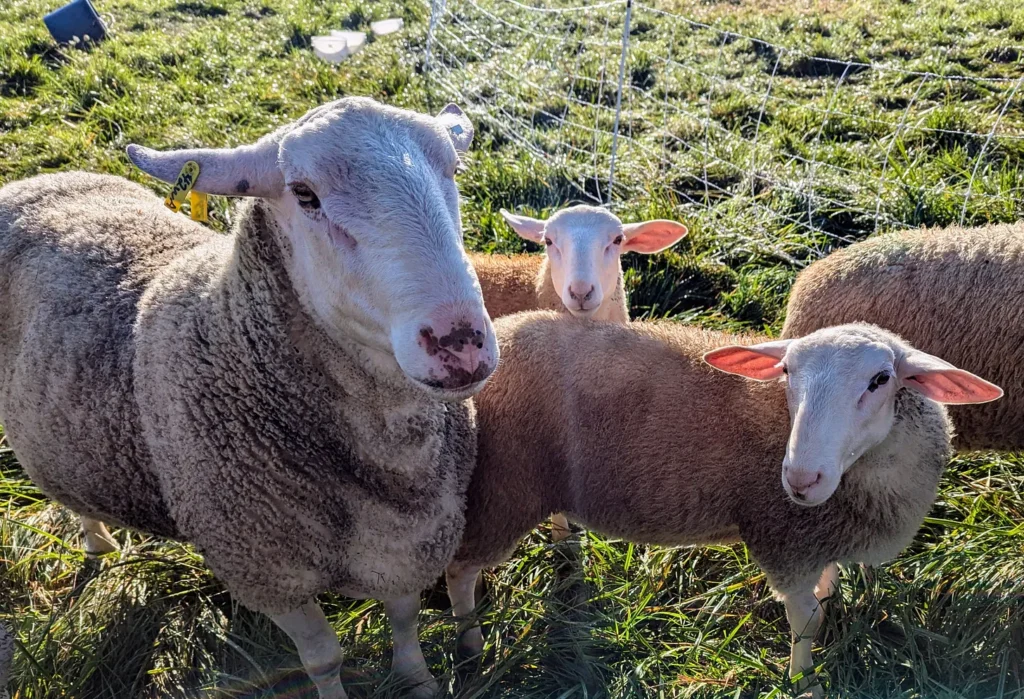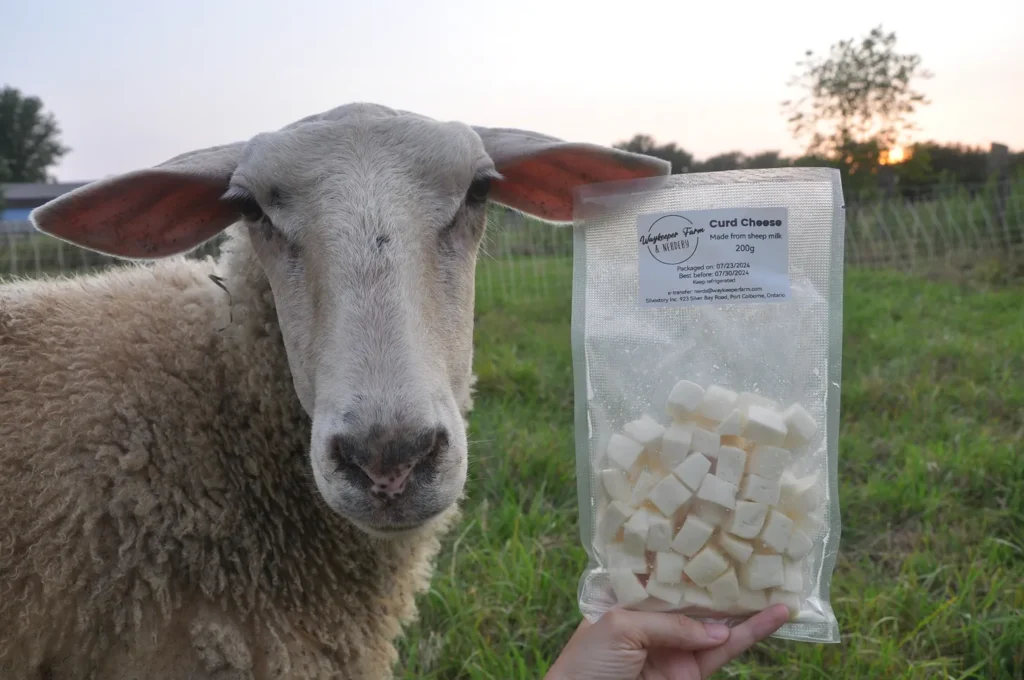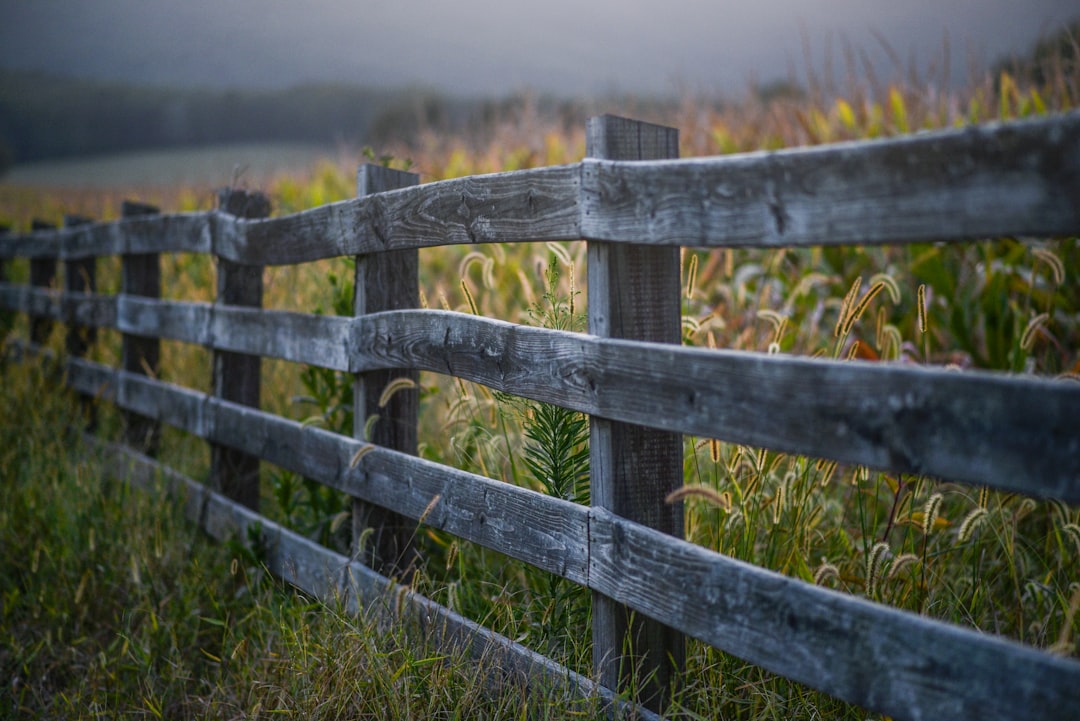Honoring Endings When You Love Beginnings 27 Jan 10:46 AM (2 months ago)
I don’t know about you, but I love beginnings. Starting something new just fills me with so much excitement, hope, and energy.
Endings, not so much.
Don’t get me wrong, I know that every new beginning comes from some other beginning’s end. Thanks, Semisonic for popularizing this Seneca quote in the song Closing Time.
It’s a great reminder that nothing is static and things always change.
There are new beginnings and with that comes endings, too. Nothing lasts forever, including our businesses, hobbies, favorite media, and even our lives.
My grandpa used to say that no one makes it out alive.

But how do we honor the endings?
One way we can make peace and even enjoy endings is to honor them. How can we give endings a different energy but just as much love as beginnings?
Maybe it’s not the same excitement and hope, but it can instead be an appreciation for what was and an opening for what will be.
As the year winds down, we have one ending ahead of us.
We focus a lot on the beginning of the new year, but we can also appreciate what this year’s ending means, too.
In nature, it’s fun to think about planting new things. It starts out as a seed placed in the soil and then after growing, photosynthesizing, flowering, fruiting, and then withering it dies. That part is important because otherwise, we won’t achieve growth in the next season.
That plant decomposes and becomes food for the soil microorganisms that will feed future plants.
Let’s look at the different ways we can honor endings.
#1 Finishing what we start
Sometimes if you’re a starter like me, it’s much easier to start something than to finish something.
You might be so focused on the early stages that getting to the end feels like a chore.
When drafting my first novel, I wrote tens of thousands of words building this story world and having stuff happen in my characters’ lives… only to try to wrap up the entire story in one “day” in the characters’ lives.
The ending of a book shouldn’t be rushed because that’s where the emotional payoff happens for the reader. My brilliant developmental editors pointed that out, and it was easy to see that I got bored and tried to wrap things up quickly at the end.
This same type of rushing can happen when we try to finish other things, too.
If you spend a lot of time recording a podcast or video but don’t spend the extra time to edit or export the file in a high-quality format, you’re not honoring the work that went into it.
Or, maybe you’re moving on from another project or type of work. How can you end things on a good note? How can you wrap up any loose ends so that things end well?
You might also realize that you’re not the best person to bring a project to completion. There’s nothing wrong with that. You can hand it off to someone else who can keep it going, wrap it up, or put the finishing touches on it.
For many years in my business career, I wrote newsletters and had someone on my team load them up and manage publication schedules.
Similarly, when I knew it was time to move on from AccessAlly, I found someone who would be able to take it over and keep it going for our clients long term.
#2 Gratitude for the whole
Gratitude might be cliche, but when we’re closing a chapter, it’s a great way to give ourselves the gift of reflection.
Some endings happen because of choices we make, while others happen outside of our control. Finding the lessons in both situations can be powerful.
Right now I’m learning how to tan sheep pelts because it’s a way to honor the death of our sheep. We want to use all the parts of the animal, and that means giving their wooly pelts a new life as a rug or cushion.
This is another approach to gratitude: making the most of what we have. Even when it’s difficult and requires us to step outside our skill level and usual expertise.
This might be a great time to express gratitude for something that ended. It could be a relationship, a project, a dream you’re letting go of, a dear pet, or anything else.
#3 Taking the time to grieve
This year brought many changes to our lives, but a big one was the death of our dog Millie. She lived with us for 14 years and she was 16 years old when she started losing her eyesight and hearing, and then her digestion very rapidly last summer.
She was an amazing companion and witnessed the birth of our kids, several moves, and lots of group naps. We buried her in our field and will plant a tree in her honor come spring.
We quickly adopted a new dog named Mokie, and we’re training him to be a sheepdog for the farm. There wasn’t much time to grieve Millie’s loss with Mokie’s arrival, but now that things have calmed down during the winter we’ve been better able to process and grieve.
There are so many ways to honor the endings in our lives. In the moment, we’re often busy with the next thing that urgently needs our attention.
Taking the time to process and honor a big change or an ending helps us move forward. No matter how long it takes, give grief the space it needs.
It helps us acclimate to change and makes us more resilient for the next ending, whether it’s one we chose or not.
Honoring this ending
I had the urge to hit send on this as soon as I finished my round of edits. But I decided to give myself time to sleep on it and review it one last time.
I may still prefer beginnings, but honoring the endings is a practice I’m willing to get behind.
I’m sending so much love and appreciation your way. May all of your endings be honored, so that new beginnings may bloom.
Farm in Progress 27 Jan 10:45 AM (2 months ago)
Recently, a reader asked me to share more about getting our regenerative farm going.
I hesitate to share too much about our farming journey because I’m still in the middle. I don’t have it all figured out, I’m still making mistakes, and I don’t want to lead people in the wrong direction if what we’re trying ends up failing.
But we can often learn a lot by watching people on their journey, imperfect as it is.
So today I’ll be sharing some lessons learned from the farm and what we’re currently grappling with.

The things we figured out
Since moving to the farm, we jumped feet-first into things we had never done before.
Keeping chickens, ducks, and geese. Growing fruits and vegetables in a commercial-sized greenhouse. And raising dairy sheep.
The poultry has been the easiest so far. We have managed to keep most of them alive and well, except when an opportunistic hawk nabbed a few chickens while they were free-ranging.
Growing vegetables in the greenhouse has been a challenging learning curve. One that I’ve enjoyed.
At first, it was a matter of figuring out the timing. When to plant so we could have veggies year-round. I’m still working on getting the balance between removing heat-loving summer plants like tomatoes, peppers, and cucumbers in time to plant cool-loving brassicas like cabbage, broccoli, carrots, and daikons.
The big challenge we struggled with until a few months ago was cabbageworm damage. We might get one out of every five brassica plants to survive the bug damage.
The best solution was to cover these crops with row cover and hope no bugs got under the cover. This was a decent approach, but if the timing was off and we had caterpillar eggs in there before we put the cover on, our veggies were toast.
These caterpillars work fast too. They could defoliate a plant in just a day or two, and even if I squished every bug I saw, it was a losing battle.
Luckily, I’m always seeking out gardening knowledge. I came across the concept of Korean natural farming and the book Jadam Organic Farming (affiliate link). In this book, there was a list of natural homemade pesticides created using common plants and water.

One suggestion for caterpillars on brassicas was Ginko. We have a Ginko tree growing near our local library, so one fall day we asked the library if we could harvest the fallen Ginko nuts. They gave us the go-ahead. We were doing them a favor because these fruits are pretty stinky, and we picked a small bag full. Then we boiled the Ginko fruits, strained the solids out, and kept the liquid.
We diluted our Ginko brew with water and added a bit of liquid soap. (We also made liquid soap by following a recipe in the Jadam book, because we like experimenting with stuff like that.)
I put my mix in a spray bottle and sprayed some of my Brassica beds, fingers crossed. I was amazed that there was no bug damage for the next few days. I still had row cover over the veggies, so I assumed that was doing most of the protecting.
But a few days later, one of the areas with a cover had new caterpillar bite marks. It was the one area I had not sprayed! So I started applying the spray every 3 or 4 days, and then removed the row covers entirely and we have had the most bug-free season of brassicas ever.
I was skeptical about the marketing claims the authors of the Jadam book made. But since making this effective, practically free, and non-chemical pesticide I’m convinced they aren’t overpromising.

Things we’re still figuring out
By far the biggest farming challenge has been our dairy sheep. Not that they aren’t rewarding, but they have given us the hardest lessons.
The aspects that might seem the most difficult, like lambing time, haven’t been bad. But figuring out how to manage internal parasites or “worms” as they are often called has been tricky.
In the 4 years we’ve had sheep, we lost several sheep to parasites. Our first year we got lucky and assumed caring for sheep was easy. The second year is when the troubles started.
We started with rotational grazing from day one, which is both regenerative to the soil and offers more forage for the sheep to eat. But, it can also increase internal parasites because sheep will re-graze the same pastures again in the same year. One solution would be to get more land so they don’t re-graze as soon, but we weren’t ready to give up yet.
We tried commercial dewormers but a lot of parasites are resistant to them. We learned how to take poop samples and analyze them to see how many parasite eggs were present in each sheep. This was useful, but it didn’t offer us a solution.
We ended up figuring out a mix of minerals that help against worms. The mineral that seems to do most of the heavy lifting is Copper Sulfate. Since incorporating it into our sheep management, we have had much better luck with parasites. It’s still not 100% and we have other levers to pull, like bringing sheep to the barn and keeping them off the grass when their parasite loads are too high.
Learning this lesson has been one of the most difficult parts of shepherding. Losing the sheep that you’ve named and that you take care of every day is heartbreaking.
Despite these setbacks, we still managed to jump into the milking aspects. In our first year, we milked two mama sheep, called ewes, by hand. It would take us 30 minutes by the end of the summer, and much longer for the first few weeks. Our forearm muscles grew. But the second year we invested in a milk machine, and it’s been amazing since we now milk five sheep.
What do we do with all the milk? That’s been another learning curve. We’ve figured out how to make cheese, yogurt, butter, and gelato. We made plenty of botched batches along the way.
We’re considering whether we should get a small dairy cow, like a Dexter. Because sheep don’t produce milk year-round, this would give us a milk supply in the sheep’s off-season.
But we’re asking ourselves if we’re of sound mind to bring another dairy animal to the farm. The benefit of dairy sheep is that we get a break from milking in the winter. We’re still in the middle of making this decision.
Another ongoing challenge with farming is what happens every time our kids bring home a cold from school. We must keep showing up for our daily farm chores, even if we’re not feeling well. It’s tricky, but doing the daily farm chores helps keep us active and healthier overall.

Turning our farm into a small business
For the first few years, our farm was a hobby. It kept us grounded and was a beautiful way to spend time away from our computers.
Now that I’ve sold AccessAlly, I have more time to devote to the farm, and we’re looking at ways to make it into a small business.
I have no plans to make it into a huge venture. We’re just selling some surplus like cheese, eggs, and vegetables. We’ve also sold some lambs because otherwise, we would have too many sheep in just a few years.
There’s the possibility of turning the wool from our sheep into yarn. Making gelato to sell in the summer. Offering farm tours and teaching cheesemaking.
At this point, the possibilities are endless but we want to be intentional about our choices. I want to share the bounty of our farm, but I also don’t want to create a stressful business. To me, sharing knowledge and good food is more motivating than making a profit.
Building a community is a big motivation for me. I love showing people the animals and having them taste duck eggs or fresh figs from our greenhouse.
Selling software is much easier because you aren’t limited geographically. Selling food with a shelf life means you need local people who want what you have to offer immediately. It’s a whole new learning curve.
Worrying vs. Tuning Your Idea Antennas 27 Jan 10:43 AM (2 months ago)
If you’re reading this, chances are you have a very active brain. Perhaps even a little too active. Maybe your brain likes to jump ahead and imagine all the possible future problems that could materialize.
You’re not alone. If left to its own devices, my brain will invent stuff to worry about on top of the very real things it needs to think about.
But my brain also loves to come up with ideas. Over the years, I’ve learned to give my brain something to focus on so that it won’t go down an endless worry trail.
Years ago, I used to think ideas just “came” to me, but the reality is that I need to tune in or prepare to receive ideas.
How to Tune Your Brain
How do I change what my brain focuses on? By tuning my idea antennas. Maybe you have these, too. But before we go any further, let me explain what I’m talking about. Because I completely made this term up, and I hope it will make sense once you hear more about it.
What’s an antenna? It’s an electronic device that converts electric current into radio waves or vice versa.
What about an idea antenna? It’s that receptive part of you that can “pick up” on ideas in the air, and transmit them to you.
There are a few different ways to get new ideas.
You might sit down and start brainstorming. You might do some research to see what other people are doing in your field or other industries, to get your imagination fired up.
But one of the most powerful ways that I get new ideas is to direct my thinking in a certain direction and then completely let it go. I do something else, like working in the garden, showering, or cleaning the dishes. The next thing I know, ideas are showing up and dots are connecting.
In this case, I’m not actively thinking about getting new ideas. I just gave my brain something to work on, and then let it do its thing. One of the most common times when ideas come to me like this is right before I fall asleep, or (thanks to perimenopause!) if I wake up during the night.
So how exactly do I tune my antennae to get the best ideas?
For me, that looks like asking myself questions like:
- How could I solve this problem?
- What would make this more fun?
- Who would be the best person for this?
- Why does this matter?
- What’s next?
- If anything was possible, what would I want to happen?
The trick is to focus on a specific area of interest to prime the ideas to start flowing.
I’ve used this technique for everything from designing our farm’s orchards and rotational grazing systems to coming up with titles for books, events, and even entire businesses. I’m even priming my idea antennae to dream up interesting scenes for the novel I’m writing.
Ideation Is Productive Worrying
I think part of my ideation strength comes from my “worrying brain”. If I don’t give my brain something to focus on, it will start to invent things to worry about and fixate on.
So, I always like to have a creative effort or problem to solve. It keeps me from thinking about all of the things that could go wrong or that I should have done by now.
That’s not to say that there aren’t very real worries to be aware of and to prepare for. There’s a way to make worrying productive by guiding your brain to come up with solutions or plans to help you meet real issues head-on.
That way, you’re tapping into your brain’s resources with a purpose.
Not that engaging in some light daydreaming isn’t amazing, too. But if you tend to be a worrier like me, it helps to give your mind something more focused to work on, so it won’t fall into repetitive stressful patterns.
Influenceable 27 Jan 10:43 AM (2 months ago)
Recently, I found a video on my phone that my 8-year-old daughter recorded.
It starts with her saying, “Hi, my name is Tegan and today I’m going to show you how to do a backbend, the splits, and a cartwheel.”
Then she gets interrupted by her little brother and the video ends.

My first reaction was that she was very confident on camera and I loved that she was showing people how to do the gymnastics that she learned over the summer.
Then I realized she was imitating the YouTube videos she’s watched where young girls teach gymnastic moves. She fell in love with Anna McNulty in particular.
That got me thinking.
Are we just replicating what we see on each platform?
My daughter is only 8 and it’s natural for her to imitate what she sees. That’s how we learn and it’s perfectly healthy.
However, I realized that most of my content online is heavily inspired by others in the space.
For example, my farm’s YouTube channel is very similar to other permaculture or gardening channels.
But beyond video, I think many of us start to absorb what’s “expected” of us on each platform.
On Twitter/X, you had to be witty. Facebook was for sharing life moments, like weddings, births, and travel.
Instagram was for inspirational and aspirational visuals.
Pinterest too, but with more recipes.
A website would automatically have similar navigation and an about and contact page. Probably a blog, too.
Even Substack had a vibe and certain essay styles were better received.
The platform you chose would dictate how you showed up. From what you said to how you presented it.
We are being influenced, not just by influencers, but by platforms to reproduce what’s working.
How much of what we share is really from us?
We’ve been trained by the algorithms of each of these platforms to do certain things to succeed.
We see what’s working in other people’s content and then mimic it.
Maybe it’s because it worked once and then we start seeing it everywhere. Suddenly it feels like that’s the only acceptable way of showing up on a given platform.
The norms reinforce themselves.
Then we might start to ask ourselves if we’re really showing up with our own creativity, or just an echo of someone else’s?
There’s nothing wrong with playing by the algorithm’s rules. It helps you get more exposure for your message, that’s for sure.
But at the end of the day, I like to think that those of us who choose to create content online have some say in how it lands.
Maybe even in how we chose to deliver it.
Certainly, we can choose our platforms. But sometimes there’s just more momentum on one platform or another, for your particular topic or business.
So you can conform and try to let a little uniqueness shine through, for your own satisfaction. And maybe it will shift the norms of these platforms, too.
One can only hope.
Take the Stairs To Reach Your Destination 27 Jan 10:42 AM (2 months ago)
When my husband and I moved to Brooklyn, New York we lived in a 4th-floor apartment.
The building had an elevator, but every day to walk the dog and do our errands we took the stairs.
It was a beautiful old building with a slow elevator that took forever for the door to open and close.
Taking the stairs was just more energy-efficient, and faster.
Taking the stairs saved time and it helped keep us in shape.

Taking the stairs in life
There’s a lot of pressure to rise to success quickly.
To make a ton of money, buy a giant house, and a fancy car, and “arrive” as soon as possible.
Sometimes when you come into riches quickly, you might find yourself without these riches in just a few years. Not having the experience to handle an influx of money or success can work against you.
That’s where the power of stair-stepping comes in.
Instead of trying to jump ahead and be “there” right away, you gain experience at each step.
It seems like the less efficient path, but it’s more efficient in the long term.
The obligatory garden analogy
This year we grew over 400 heads of garlic.
That’s a lot of garlic and we’ll be keeping some to plant next year, sharing with friends and family, and selling a few bulbs, too.
It wouldn’t have been possible to grow this much garlic in my first year.
I remember harvesting 20 garlic bulbs in my first year and being so proud. I was in awe that I was able to make this happen.
I learned a lot in the process. How to prepare the soil, plant, tend, harvest, cure, and store it.
A few years later I also learned what not to do as I expanded my garlic patch. With just 20 cloves planted, I didn’t worry about weeds.
But when I got into the 100s, suddenly, there was a lot more weed pressure and I had to figure out my mulch game.
This year was the smoothest.
I learned the easy and tough lessons and gained stamina for harvesting, cleaning, and storing our garlic.
It would not have been possible to grow this much garlic in year one. I would have wasted my time and seed garlic money and gotten frustrated.
Yet we expect instant numbers
We think we can skip the learning curve when it comes to business, personal finances, or our careers.
We set outrageous goals like having a six-figure month or a seven-figure year… when we haven’t had a four-figure revenue month yet.
I’m not judging by the way, I did the same thing. I wanted that big splashy fast growth.
But I’m glad I took the stairs.
My business income followed a slow and steady trajectory.
On the personal finance side, we stair-stepped our way into bigger investments, too.
It felt like a big step to commit to renting our studio apartment in Toronto. Then another jump up for a one-bedroom apartment in Brooklyn.
When we bought our first home it felt daunting, but we got comfortable with that higher monthly payment.
Each step increased our comfort level with spending on housing and it taught us a lot.
We learned lessons along each step. We realized that the big house we bought in Texas was too big for us. A big house meant more expenses, more cleaning, and more heating and cooling.
When we decided to invest in a farm property, which was a more expensive step, we wanted to make sure the house was the right size. We downsized the house, opted for a place without a pool, and focused on the qualities of the land.
We learned what was important to us from experiencing them.
That’s what stair-stepping helps you do: it gives you perspective.
When you take the elevator and rush past all the learning, you might get to the destination but you’ll miss out on the lessons along the way.
Trying to buy a farm before getting comfortable paying our rent each month would have been too much pressure.
The slow and steady stairway
The first time you take the stairs, it’s hard.
But it gets easier every day you do it. Each time you take the slow and steady route, you gain momentum that’s more sustainable long term.
These days, I still feel the urge to push through and go faster.
But I remind myself that the stairs are the better option.
Plus, you get a nice pair of legs out of it. And they will take you wherever you want to go next.
How We Can Protect Our Time Or Let It Escape Us 27 Jan 10:39 AM (2 months ago)
On a farm, fences are a big deal.
They’re often one of the biggest infrastructure expenses.
They’re also necessary in many cases.
Fences keep certain things in and certain things out.
Some fences might be to guard smaller animals against predators. Or keep grazing animals like deer from eating crops or tree branches.
Fences are also used for rotationally grazing animals as we do with our sheep. They get fresh new grass daily, and the pasture has time to regrow before another visit.

In life, we often build fences for our time.
Our days and calendars are a lot like an open pasture.
They start empty and we gradually add fences to guide how we spend our time.
Some may be fences we don’t control, like work commitments, kids’ schedules, or healthcare appointments we can’t move.
But by and large, we decide where to put the fences around our time.
We might use a fence that keeps us from spending too much time in a meeting by having a start and end time scheduled.
Or we might have a fence that protects the time we want to exercise or write by waking up before the rest of the household is awake.
Fences for our time remind me of the concept of time blocking.
Time blocking is often touted as a solution to reducing overwhelm and improving productivity. It’s where you block out time on your calendar and decide exactly what you’ll get done during that block.
As much as I’ve wanted to time block, I always rebelled against it.
It felt like I was micromanaging myself. I wanted the freedom to do different things based on changing circumstances. Not just blindly follow what my calendar told me to do.
I realized that some people like smaller fences and others like bigger ones.
For example, you might thrive using smaller fences with specific activities dedicated to each time block.
Or you might prefer a large fence, with a variety of activities available.
On our farm, if we have a large group of sheep we need to give them more space to graze or move them more often.
That way they won’t run out of fresh grass.
If we have a smaller group of sheep, we can give them a smaller area to graze.
For our schedules, we can evaluate if we need a big chunk of time or smaller ones that change for each task.
This reframe helped me better appreciate time blocking and concepts like deep work, where a larger block of time is recommended to get deeper into the work.
Sometimes we need a tall fence, because things need to be contained more. Maybe you have a task that requires focus and must block your internet and all distractions.
Other times, you might need a little fence that’s more of a suggestion. It won’t keep everything out but will provide some time protection.
Protecting our priorities
Fencing your time is a great way to be intentional and to prioritize what matters to you.
Without fencing, our animals would escape and wander onto the road, or be snatched up by coyotes.
Without time fencing, our time might slip through our fingers or be taken away by forces with different priorities.
It helps to remember that our days have a mix of fences built by others like our work and families, and by ourselves.
The best part?
Fences aren’t permanent.
You can add or remove them, and move them around until you figure out the best configuration.
And even fences that have been in place for a long time are not set in stone.
Eventually, you may enter into a new season of life where a different time infrastructure is needed.
The ultimate fence…
The ultimate fence around our time is the one we can’t see.
It’s the end of our lives, and none of us know when we’ll reach that fence.
That makes how we choose to spend our time all the more precious.
So let’s pick the fences we build around our time wisely, while we still can.
Solving Problems Can Get Messy 27 Jan 10:39 AM (2 months ago)
In life and business, there are going to be challenges that show up.
We can start by anticipating problems and figuring out how to overcome them before they happen.
That’s smart and can help prevent problems from sneaking up on us.
But sometimes a surprise problem shows up that you couldn’t prepare for.
How do you solve one of these problems?
From the messy middle.

Solving problems from the outside vs. the inside
Walking around the outside of a problem might give us some useful information.
But it’s often not enough.
It isn’t until we’re right in the middle, we’ve tried a few different approaches and maybe failed a few times, that we can come up with a real solution.
After we’ve gotten a look at the inside of the problem, taking a step back and talking to someone else to get perspective can also help.
Or going for a walk, taking a shower, or doing something unrelated to your problem for a while.
Sometimes journaling helps me with the mindset stuff that can hold back my “thinking outside the box” skills.
But you won’t know what isn’t working in your approach to solving it until you try.
Waiting can make a problem appear bigger
Sometimes avoiding a problem because we don’t know how to fix it makes it appear bigger.
It builds up in your mind.
The longer you avoid directly engaging with it, the worse it seems.
Then when you decide to dive in and figure it out, it’s not nearly as bad as you expected.
My mundane example is a set of reclaimed 275-gallon totes that we wanted to turn into rain barrels.
These are big cubic plastic containers that previously stored cooking oil and molasses. We needed to clean them before we could use them to capture rainwater.
The barrels stayed next to our driveway for weeks before we had time to start the cleaning process.
Each time I walked by them, I felt anxious about what was waiting for me inside those barrels.
I knew they had been emptied, but not completely.
When I finally decided to tackle the cleaning process, my first attempts didn’t give me the results I expected.
These barrels were caked with sticky gunky stuff that blocked the outlet.
Spraying them with water wasn’t enough, and soap only helped a little.
It took a few different approaches, taking a break, and teaming up with my husband to come up with a better solution.
It got messy.
It wasn’t pretty and I got grumpy about my lack of progress.
But being in the middle of problem-solving still felt better than looking at these barrels and not feeling any momentum toward getting them clean.
Meeting a problem head-on helps you get momentum toward solving it.
Avoiding it prevents you from gaining momentum.
Problem-solving might get messy, but you can always take a shower.